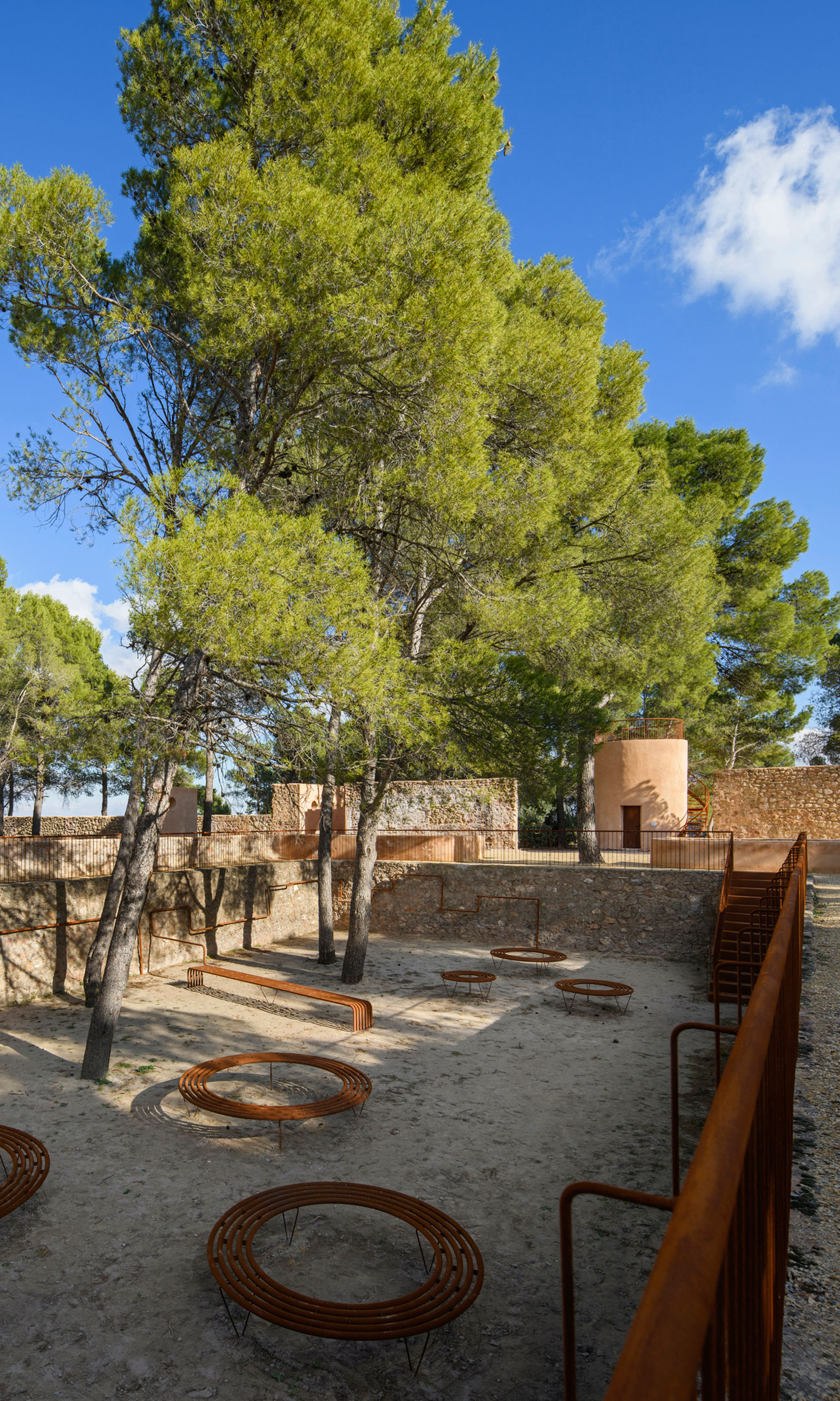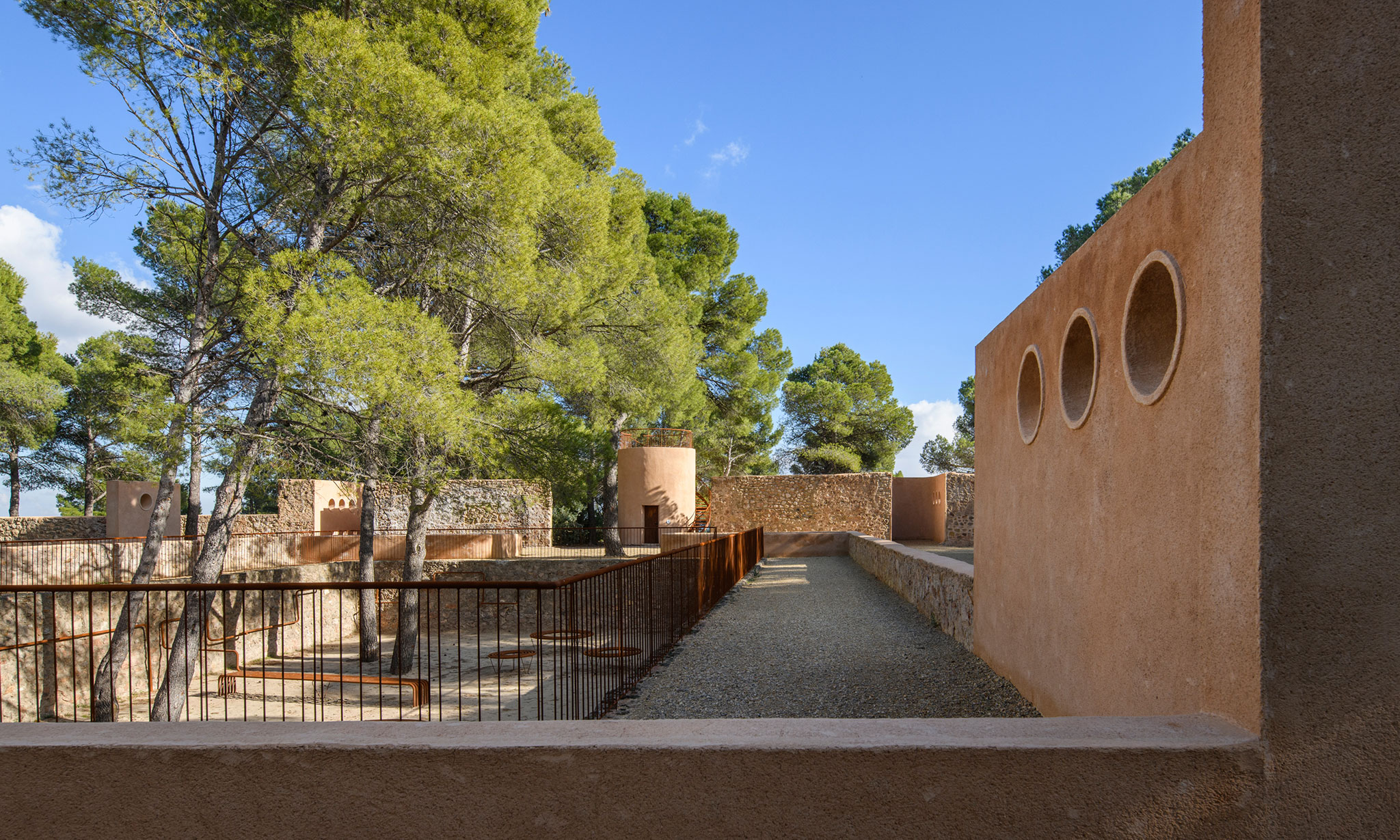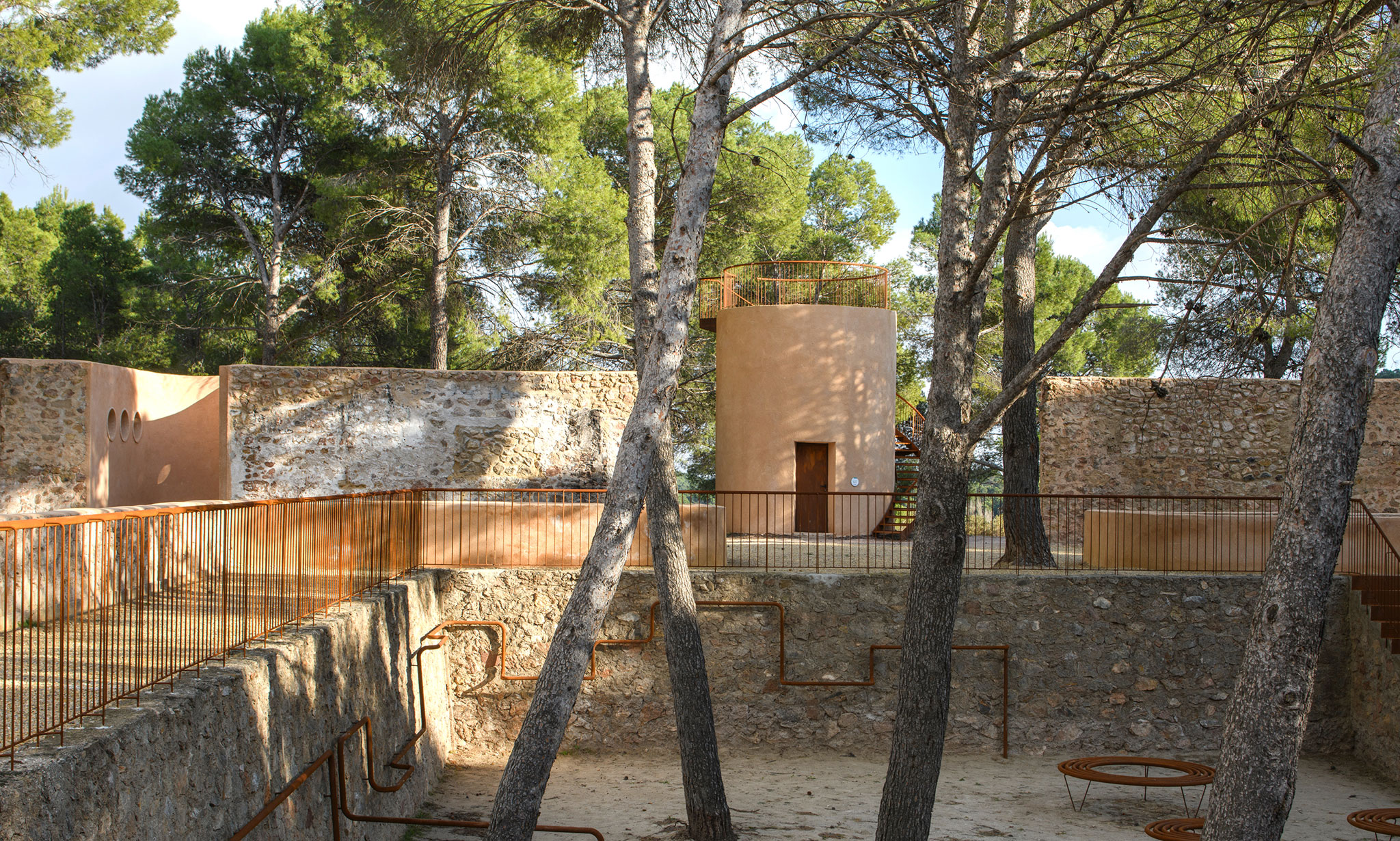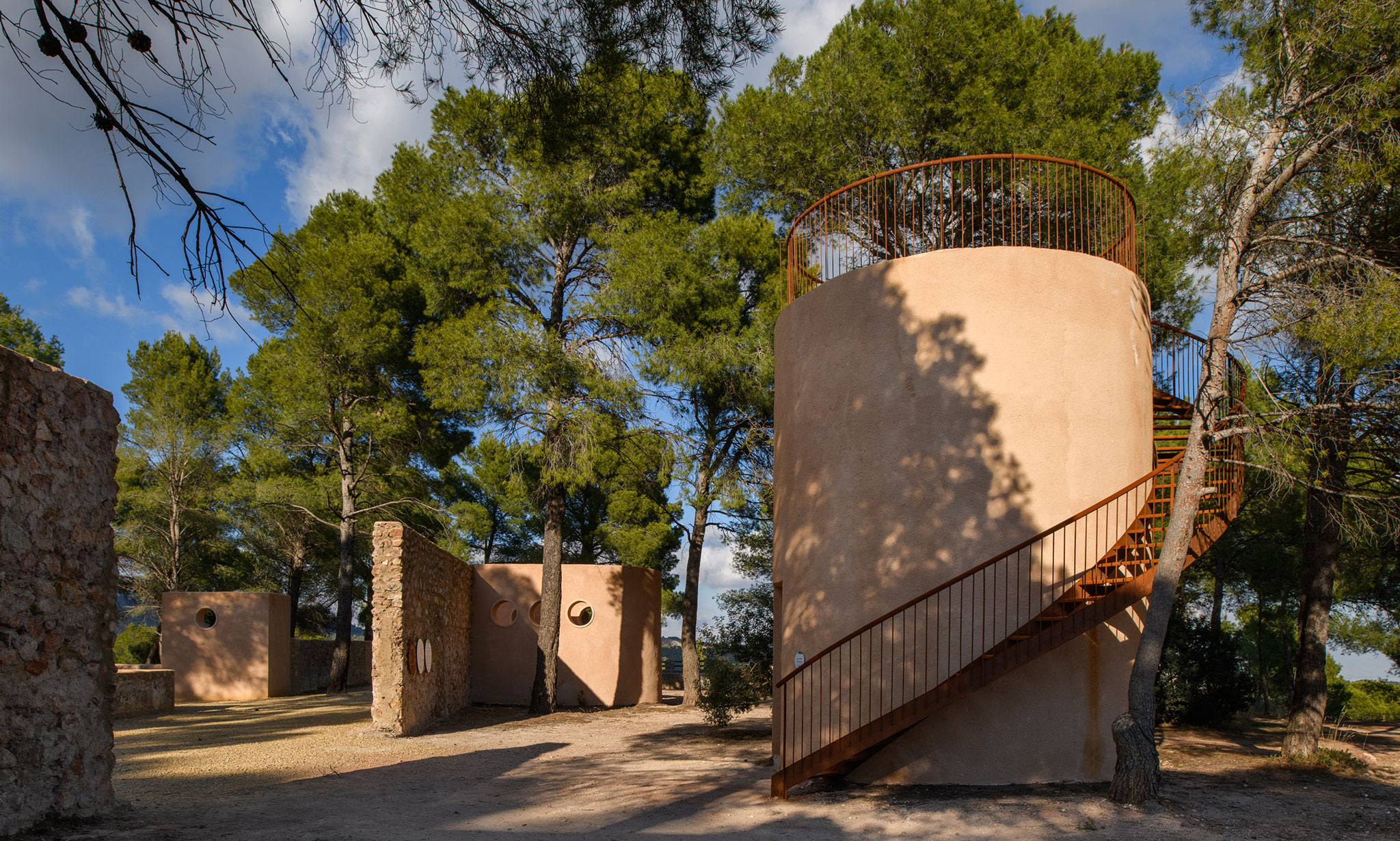The project is approached following two guidelines. The first is to recover the shape of the plane by disassembling the elements foreign to the original project, regularizing the heights, and facilitating a clear understanding of the space. For this, recovered stone and mortars made with local soil were used to restore parts worn over time in a sustainable way. The circular holes that evoke the morphology of the plane were also restored.
The second action is to turn the area into a playful space and viewpoint of the environment. "The base of the pool pit has been filled with beach sand like the one that was originally placed there and that surfaced when clearing." A series of geometric shapes with steel tubes have also been added, inviting visitors to interact with the environment, their use being the free interpretation.
A place in which to discover an unusual past, part of our memory, and a space in which to reconnect with the present through imagination.

Rehabilitation of the plane environment by Blancafort-Reus Arquitectura. Photograph by Joaquín Zamora.

Rehabilitation of the plane environment by Blancafort-Reus Arquitectura. Photograph by Joaquín Zamora.
Project description by Blancafort-Reus Arquitectura
This landscaping intervention is carried out on the vestiges of a building that was never completed due to the outbreak of the Spanish Civil War. Its destination was going to be a rest residence for the Air Force and the most remarkable characteristic was its shape because they wanted to lift an airplane in the middle of the mountain.
What has transcended to the present day has been the footprint of some of the building's walls, a water tank located in what would be the nose of the plane, the swimming pool pit, and a nondescript and abandoned construction that was inserted at the beginning of the eighties to offer a restoration service.
In addition, the area surrounding this enclave is a wooded extension that has been invading the area generating an attractive coexistence between ruins and nature. So, given the state of abandonment, deterioration, and disfigurement of the architectural remains, the proposal has tried to recover the historical memory of the place, evoking the romanticism of its conception and emphasizing the fusion between human action and the mountain. To this end, the project has focused on two issues:

Rehabilitation of the plane environment by Blancafort-Reus Arquitectura. Photograph by Joaquín Zamora.
1 To Reveal The Shape of the Plane
For this purpose, the bodies foreign to the original project are dismantled and the heights are regularized, leaving the perimeter wall higher so it allows to have a clear understanding of the space meanwhile, the interior walls remain at a level that invites to rest.
With recovered stone and mortars made with local soil, some walls that had disappeared with time and despoilment have been replaced in a sustainable way. Lastly, the circular holes that evoke the morphology of the plane have been restored.
2 To Invite Exploration of the Place
Rescuing the middle area as a recreational space and the water tank as a viewpoint.
The base of the pool pit has been filled with beach sand like the one that was originally placed there and that surfaced during the clearing. As a stimulus, a series of geometric shapes have been outlined with a steel tube that invites interaction. Depending on the mood with which one arrives there, a more plastic and contemplative perception or a more physical and creative reaction may predominate. Rest, play, observation, drifting, exploration...

Rehabilitation of the plane environment by Blancafort-Reus Arquitectura. Photograph by Joaquín Zamora.
On the other hand, reviewing the original footprint of its layout, a staircase has been designed to climb up to the old water tank from where the plane can be seen in all its breadth.
In short, a place has been designed to discover an unusual past and to reconnect with the present through an evocative walk.
- What is this for?
- Whatever you can think.




































